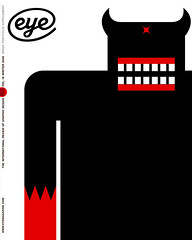Winter 2006
Spinning out of common sense
The Laws of Simplicity by John Maeda
By John Maeda. Design: John Maeda MIT Press, £9.99This is a slim, attractive volume, just the kind of thing to take on holiday, which is exactly what I did. After 50 pages I decided to put what I’d learnt into practice and simplify my life by not finishing it. Only on being asked to review it did I return to its second half, which turned out to be the more interesting 50 pages.
The book is structured around ten proposed laws of simplicity and three ‘keys’. Its central tenet is that more is often less. In an age of spiralling complexity people are coming to realise the value of, and are willing to pay for, simplicity.
Yet Maeda makes the simple complex. It is not a good start when a book on simplicity includes a ‘How to use this book’ section. The problem isn’t so much what he has to say – there is useful stuff in here – but his delivery. Common-sense ideas are dismantled, sexed-up and dragged out over a chapter.
Maeda demonstrates his second law, Organise, by parsing his daily chores through a four-step paradigm, SLIP (Sort, Label, Integrate, Prioritise). Several pages later you realise that all he has done is make a glorified list. What’s more, he has developed a software tool that allows you to do this online (lawsofsimplicity.com). While this has a geekish charm, it is exactly this kind of thing – using technology to do what could be achieved with a pencil and scrap of paper in a tenth of the time – that so unnecessarily complicates modern life. It reminds me of friends who spend weekends colour-coding their CD collection.
The book also feels weighed down with that consultant-speak that seems to have infiltrated so much of American culture, particularly the worlds of branding and design consultancy, as in the preface’s ‘I welcome you to this creative experience’. It is hard not to feel that those who will respond best to The Laws of Simplicity, or LOS, as he calls it, are marketing and client-facing types. Maeda is fond of acronyms and SLIP is just the TOTI (tip of the iceberg). Again, the problem with these mnemonic devices – brain, she, etc – is that although they ‘shrink’ things they also complicate them and I found myself constantly having to skip back through the book to decode his meaning. Similarly, while the icons that represent each chapter is represent are nice visually, it is not clear why his Context law is meant to be triggered by a pixelated pictogram of a duck.
Maeda is aware of some of these shortcomings (he lists them in the final chapter) and there are things of value to be gleaned. The book is perhaps at its most instructive when dealing with concrete examples – the iPod’s mirrored back is a visual trick that makes it appear thinner – and at its most interesting in tangential areas – the bond of trust between a sushi master and his loyal customers. But graphic designers may already be aware of many of the issues explored in this text: editing and organising is what we do.
Aaron Seymour, designer, London
First published in Eye no. 62 vol. 16 2006
Eye is the world’s most beautiful and collectable graphic design journal, published quarterly for professional designers, students and anyone interested in critical, informed writing about graphic design and visual culture. It is available from all good design bookshops and online at the Eye shop, where you can buy subscriptions and single issues.

